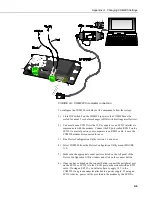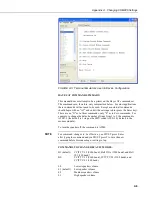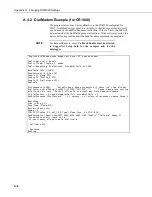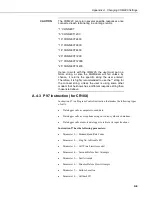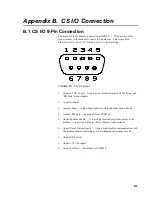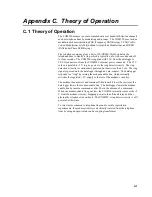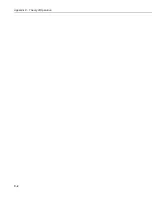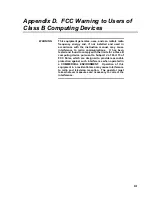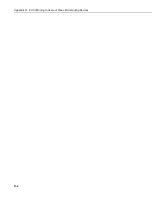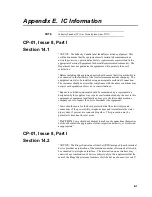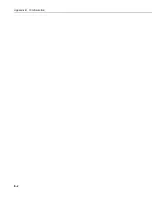
Appendix C. Theory of Operation
C.1 Theory of Operation
The COM220 modem is used to transmit data over bandwidth-limited channels
such as telephone lines by modulating audio tones. The COM220 uses various
modulation schemes including FSK (Frequency Shift Keying), TCM (Trellis
Coded Modulation), QAM (Quadrature Amplitude Modulation), and DPSK
(Differential Phase Shift Keying).
The telephone company gives a 40- to 150-VRMS, 20-Hz signal on the
telephone lines to signify a ring, which is typically on for two seconds and off
for four seconds. The COM220 is supplied with 12 V from the datalogger’s
CS I/O connector or from the COM220’s external power connector. The 12 V
is then regulated to +5 V to give power to the ring detect circuitry. The ring
detection circuitry is continuously powered but draws less than 2
µ
A. The ring
signal is passed on to the datalogger through an opto-coupler. The datalogger
responds to a “ring” by raising the modem-enable line, which internally
switches the reg5 V supply to the rest of the modem’s circuitry.
The modem then answers and remains off-hook until it loses the carrier or the
datalogger lowers the modem-enable line. The datalogger lowers the modem-
enable line by remote command or after 40 s in the absence of a command.
When the modem-enable line goes low, the COM220 internally removes the +5
V from the modem circuitry, dropping power to the off-hook relay and thus
placing the telephone line on-hook. The COM220’s ring detect circuitry is still
powered at this time.
To reject noise common to telephone lines and to satisfy registration
requirements, the modem circuitry is electrically isolated from the telephone
lines by using an opto-isolator and a coupling transformer.
C-1
Summary of Contents for COM220
Page 2: ......
Page 6: ......
Page 34: ...Appendix B CS I O Connection B 2 ...
Page 36: ...Appendix C Theory of Operation C 2 ...
Page 38: ...Appendix D FCC Warning to Users of Class B Computing Devices D 2 ...
Page 40: ...Appendix E IC Information E 2 ...
Page 41: ......



